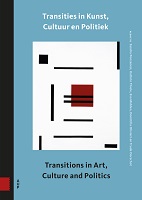Chapter Caught in a flash, arrested at a standstill
| dc.contributor.author | Wiese, Doro | |
| dc.date.accessioned | 2023-10-12T13:14:01Z | |
| dc.date.available | 2023-10-12T13:14:01Z | |
| dc.date.issued | 2023 | |
| dc.identifier | ONIX_20231012_9789048560110_12 | |
| dc.identifier.uri | https://library.oapen.org/handle/20.500.12657/76686 | |
| dc.description.abstract | This article seeks to articulate in one image the diverse genocides in German history, an image able to capture the piling wreckages of history in a flash. The point of departure is a multimedia installation by William Kentridge called Black Box (2005), in which he thematizes the Herero and Namaqua genocide during German colonial rule between 1904 and 1908. This research wants to respond to Kentridge’s demand for grief work, and relies on Walter Benjamin’s (1968) vision of history writing and Rosemarie Buikema’s (2020) concept of revolts to seek out theoretical and conceptual possibilities that allow it to posit simultaneously the singularity of the Holocaust, to articulate its deep connections with colonial crimes, and to demand a working through of Germany’s genocidal history. | |
| dc.language | English | |
| dc.subject.other | Benjaminian concepts of time and history | |
| dc.subject.other | Buikema’s revolts and cultural critique | |
| dc.title | Chapter Caught in a flash, arrested at a standstill | |
| dc.type | chapter | |
| oapen.identifier.doi | 10.5117/9789048560110_wiese | |
| oapen.relation.isPublishedBy | dd3d1a33-0ac2-4cfe-a101-355ae1bd857a | |
| oapen.relation.isPartOfBook | 95ba63c0-4a4a-4684-a56c-73ba347aa51b | |
| oapen.relation.isFundedBy | b586072e-2e5d-469f-8332-217c0beb5b08 | |
| oapen.relation.isFundedBy | 4d864437-7722-4c66-b80f-140a98d4bca9 | |
| oapen.relation.isbn | 9789048560110 | |
| oapen.relation.isbn | 9789048560127 | |
| oapen.pages | 10 | |
| oapen.place.publication | Amsterdam | |
| oapen.grant.number | [...] | |
| oapen.grant.number | [...] |

